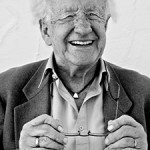Peace in Colombia?
By Johan Galtung
Bogotá, Direcccion de Inteligencia Policial, Ministerio de Defensa
Generals, Colonels, Conference Participants,
In June 1998 your President’s Office wanted proposals for peace, and I offered peace education, peace journalism and the guiding moral-ethical light, human rights, a holon of civil-political-socio-economic-cultural rights. Colombia is short on the latter, with flagrant injustices and a deep culture of violence.
In this conference a highly counter-productive word is being used: postconflict, instead of post-violence. Do not confuse them: violence means hurting-harming; conflicts are incompatible goals. Conflict may lead to frustration-aggression-violence, but personal and social maturity lead to progress bridging goals, to conflict solution. “Postconflict” sounds like all is solved with the end of violence, oblivious to reducing flagrant inequality, to harmony through empathy, trauma reconciliation, and capacity for ongoing conflict resolution.
Prognosis: violence returns, with a vengeance. Like in Colombia.
In the 1960s major uprisings took place in many parts of the world. There was the anti-Confucian cultural revolution in China for the rights of women, the young, the uneducated, and Western China; the Naxalites uprising in India, low caste and casteless tribals against the sellout to multinationals; the Khmer Rouge against the Vietnamese in Phnom Penh, in opposition to the French used to colonize Cambodia, and against the capital-city exploiting landless peasants. All three against millennia of solid structural violence.
As also in Nepal with Maoists fighting huge injustices related to caste and nation; like in the Philippines, classes but also Moros vs Christians; and in Sri Lanka, not classes but nations, Tamils vs Sinhalese.
And in Latin America, classes, domestic and imperial–starting with Cuba–in Colombia as FARC-Fuerzas Armadas Revolucionarias de Colombia and ELN-Ejército de Liberación Nacional against the poderes fácticos latifundista-military-clergy complex and the USA-Colombia military alliance.
What came out of these Zeitgeist revolts in six Asia countries?
Only one country, China, benefitted from conflict resolution; the others, under strong Western pressure, suffered postconflict treatment. The Cultural Revolution was denounced abroad and in China; yet today there are women, young and educated people all over China and West China is blossoming. There are some moves in the same direction in Cambodia.
In the other five: status quo. With foreign advisors democratic constitutions were drafted as the US enters the post-democratic stage with easily corruptible legislators accountable to banks and business, not to the people. The real focus was to restore the government’s army monopoly through the DDR formula Dissolution Disarmament Reintegration; in India and Sri Lanka through mass murder, in the Philippines on again-off-again conferences, in Nepal post-democracy with heavy corruption.
Sending mediators who could facilitate hundreds, thousands of local dialogues between the parties in mutual search for solutions would have been better than sending ceasefire monitors. Ceasefires without visions of solutions mean rest-regroup for fighters, smuggling of arms, redeployment.
Better than waiting for an end to violence would be practicing visions; better than one big agreement for the country would be many for local zones, learning and serving as models; better than verbal agreements would be facts. Menos pactos, mas hechos. But both-and is best.
And even better than best: direct talks of landless with landowners, Moros with Christians, workers with capitalists-facilitated by the government. But, caution: the government is many-headed; a team in La Habana is only ears and mouth, the brains are in Bogotá. The legislature may vote No; the executive may give the military green light for victory rather than compromise, if needed, by a coup; the judiciary may declare an agreement unconstitutional and use prisons rather than battles. Nevertheless, with the declared end to the Monroe Doctrine: US intervention is out.
The prognosis for “postconflict” Colombia is dim. However, using the six points on the Habana agenda, what a therapy for peace would look like?
[1] Integral Agrarian Development. Use it to reduce the inequality by lifting the bottom up, making the economy grow by their participation. Start with the poorest in the poorest communities, give them micro-credit for basic needs-oriented cooperatives with sales points employing the most miserable for dignity, not efficiency, for labor-intensive 3-dimensional agriculture with aquaculture, not small, isolated private plots. Include clothing, housing, polyclinics and schools with local material, generic drugs, medical personnel knowing enough to treat the most common diseases, referring others to specialists; by helicopter.
[2] Political participation is a human right, not a bargaining pawn in return for laying down arms (“Colombia Moves Closer to Peace With FARC” Washington Post, 11 Nov 2013). Better a FARC TV-channel and a political party than 50 years of mutual killing and a battlefield. Better human rights.
[3] Narcotraffic–also used for social justice; 40,000 attended narco king Pablo Escobar’s funeral–calls for co-operation and co-responsibility to reduce Colombian supply and US demand, with both reporting to the Organization of American States-OAS.
[4] An end to the conflict. DDR. But do it symmetrically, reduce the anti-guerilla elements in the army. Decriminalize, there are crimes on all sides, guerrillas, para-military, military. Colombia would benefit more from declaring a New Beginning with a general amnesty–
[5] The Victims. –if accompanied by reconciliation, using both the South African and German models: confession, contrition, compensation and joint writing of the dark history and pledges for a bright Colombia.
[6] Implementation and Verification. Yes, of course, but this agenda is not linear; start again improving # [1], work on all simultaneously.
And the police? Learn from the Japanese and Indian police: add mediation and empathy to the usual approach to security; reduce violence by building bridges between the parties rather than punishing; have dialogues with people to understand better the Colombia they want. Not to spy on them, but to enable all Colombians to build a better Colombia.
Originally published by Transcend Media Service here.
